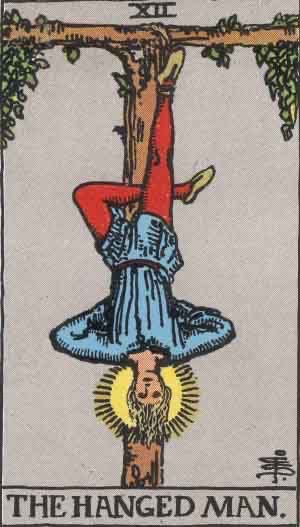For the purposes of this post, I’m going to assume my audience is at least familiar with the basics of Avatar: The Last Airbender (ATLA), i.e. the epic quest of a kid named Aang who is heir to a legacy of lost magic (ahem) ELEMENTAL BENDING and invested with semi-divine power that makes him uniquely able to control more than one of the four elements.
If you haven’t seen or at least heard about this story, I’m going to spoil some of it (specifically the first few episodes of the original and the first of the Netflix show), so if you don’t want to be spoiled, I suggest you go consume those.
If you need a reminder of what ATLA is about, others have summed ATLA up far better than I can, so I’m going to suggest you check out another summary elsewhere if you don’t know anything about ATLA before reading this.
I’ll wait.
…
Great! You’re back. Or you never left. Either way, here we go.
A caveat before I begin: I was in my early 20s when ATLA first broadcast, and I didn’t actually see it until 2020 or so, when we were all cooped up in our houses without a lot better to do.
I really enjoyed it and think it was a masterfully assembled series, but I don’t have the same kind of nostalgia for it that those who grew up with it might.
Also, I never saw the 2010 movie, so… don’t worry, I won’t mention it. Much.

The Thing about Adaptations
No adaptation can or should ever be the same as what it is adapting. If it is, that’s not an adaptation, that’s what we call a remaster: better graphics, better sound mixing, etc., but still the same story with the same order of events and visuals.
The closest adaptation to its source material I have ever seen if Zach Snyder’s Watchmen movie, which is at times a shot-for-shot remake of the comic, and it still manages to miss the entire point of the original, completely invert the meaning of the story, and basically do the worst possible thing possible with Watchmen (i.e. make Rorschach cool)… but we’re not here to talk about that.
No follow-up to ATLA has been a remaster. Not The Legend of Korra (which is a continuation), the 2010 movie adaptation (as I understand it, that’s more like an abomination), and certainly not the 2024 TV series currently airing on Netflix.
There’s also an extra problem when you’re trying to adapt something from one medium to another, especially from animation to live action. There are things you can do in animation that you CANNOT do in live action, at least not without it looking really ridiculous. Animated characters can go off-model (such as Sokka’s head suddenly distorting or his eyes bugging out to convey emotion), but in live action, I think you’d justifiably assume the character was having a stroke.
Also, though there are extremely talented special effects artists out there and this show certainly makes use of CGI, it is extremely expensive and time consuming to produce some of the effects that are comparatively trivial in animation, such as big explosions, energy blasts, and some of the fantastic results of elemental bending.
Casting: Pretty True to the Original
Don’t get me wrong, there’s a lot of carry-through between the original cartoon series and the Netflix show. They clearly made an effort to cast and style actors to match the original as best they could. For example:

When this show was first announced, I was really concerned they’d make the 2010 movie mistake of casting a bunch of white kids in these roles. You see, while there’s a long conversation to be had about the ethnicity of light-skinned characters in anime and/or anime-adjacent productions, the setting of ATLA is specifically based on an East Asian & various indigenous cultural aesthetic and, long story short, THERE ARE NO WHITE PEOPLE in this world.

They’ve certainly made an effort with casting, and these actors seem quite well suited for their characters. Aang is portrayed by Gordon Cormier, who is of Fillipino descent; Katara by Kiawenti:io Tarbell or mononymously Kiawentiio (hopefully I got her name right), who is First Nations (Mohawk); Sokka by Ian Ousley, an American actor of Cherokee heritage (though I believe there’s some discussion about that); Prince Zuko by Dallas Liu, who is of Chinese-Indonesian descent.
All of that seems to fit, at least to me. The Water Tribe of the south pole (where Katara and Sokka are from) is explicitly First Nations coded, whereas the Fire Nation has always come off to me as Imperial China/Japan.
So this is promising as honoring the source material and themes of the story.

Another note about Sokka: a while back, there was some discussion of the Netflix show toning down his rampant sexism from the original. OG Sokka wasn’t a misogynist or incel or anything, but he had a tendency to express his disdain for “girls” doing a “man’s job,” etc., etc. That kind of thing. He goes through a whole arc in the show about it, precipitated in part by his interaction with one of my favorite characters in this show or much of fantasy, Suki, a badass fighter who shows Sokka the ridiculousness of thinking women can’t compete with and (in her case) entirely dominate men. Which is a pretty good arc, and I’ve seen a number of people (justifiably) lamenting that the show isn’t set up to deliver on the same story.
Why they changed this, I’m not entirely sure, but I suspect it’s a matter of the times and the audience changing. As I’ll contend below, I think this live action show is built for an older audience than the original, and Sokka’s manifestations of sexism in the original were designed for a young audience, i.e. kids. There’s a feeling in creating Middle Grade (MG)/Young Adult (YA) fiction that you have to be a bit more overt and obvious with your themes and interactions, or the audience won’t get it. With an older audience, Sokka’s tendency to blurt out “boys are better!” nonsense would just be cringe and distracting. There’s plenty to be said about his patriarchal attitudes and the more subtle ways in which he treats Katara and Aang (another boy with whom he instinctually competes, at least at first). There’s a lot to be said about masculinity (toxic and wholesome) in Sokka’s story, and I’m curious to see where the show takes it.
Speaking of redemption arcs…

I really like this casting for Prince Zuko. Liu brings the right mixture of anger and hurt vulnerability, and the SHOW BETTER NOT MASSACRE MY BOY’S STORY, ahem. It’s promising.
One specific note: the showrunners said they were altering the story a little regarding the appearance of the comet that’s supposed to empower Firebenders. In the past part of the story, that comet is there, and it’s what gives the Firebenders the power to destroy the air temple. I’m sure it will show up again in the modern era of the show. We’ll see.
The Beginning: OG ATLA
So. I haven’t watched the whole live action show. So who knows where we will go from here.
But I noticed something interesting, and that goes to that shift in audience I alluded to earlier.
The original ATLA from 2005-2008 was aimed specifically at a MG/YA audience. There is, of course, no reason that adults can’t enjoy it (I did, and I was in my 30s). But the story is told in such a way as you don’t have to do a lot of analysis to get what it’s going for. Friendship, fun, and acceptance are all important to success, which is a great message for kids. All our heroes (except maybe Sokka) are a little weird, a little different, and they form a tight group of friends who accept and help each other. Sure, they fight and argue sometimes, as families tend to do, and there’s plenty of darkness and mistakes along the way, but as long as they follow their hearts and choose compassion (i.e. “do the right thing”), they’ll be able to overcome the challenges in their path. Uplifting. Sweet. Kind.
The intro to each episode shows us people using elemental bending, and provides us some historical context (the Fire Nation attacked, the world is at war, etc). But what’s the first image in the show proper? Sokka and Katara bickering over how best to catch fish–by spear or by the forbidden art of water bending. We immediately see their sibling dynamic, their values, their flaws, etc. Then they get swept along by the current to a massive iceberg, wherein they find a trapped Aang (and Appa). We know nothing about him except what he chooses to share/display: he thinks Katara is awesome (she is), he likes fun, and he isn’t too serious. At least not yet. The first indication we have that something is off is Aang reacting with anxiety when Katara asks him about the mythic Avatar, whom she hopes will come save the world.
Aang knows he’s the avatar. And we do too, if we pick up on that subtlety. But I don’t think the showrunners intended their audience to know this yet–I mean, they distract us immediately with a cute romp with penguin sledding. Which I think is Aang desperately trying not to face reality: he flits from fun to goofy to hilarity to distract himself and those around him. He shows his powers initially by accident by sneezing and knocking himself ten feet in the air. He and Katara accidentally trigger a flare from a Fire Nation ship, and that’s what brings his first challenge: Prince Zuko.
It’s a little bit of a mystery until Aang comes out as the Avatar in order to defend the village from Prince Zuko. He and Katara have left, meaning to go find her a teacher for her waterbending, when they see the Fire Nation sweeping in to investigate strange disturbances, etc. The results of this setup are that we see Aang’s kindness, that he doesn’t take himself too seriously, and that he’s optimistic.

By contrast… in 2024…
The 2024 adaptation starts in the past, and tells the chronological story of how Aang came to be trapped in the iceberg. In fact, we SEE, rather than just hear about the historical context. Where the Fire Nation attacks and kills off the Airbenders in a violent and brutal battle, and would have killed Aang too, except that he and his sky bison (Appa) were off getting caught up in a storm, and the Avatar powers activate and freeze Aang in the iceberg.
The emotional context of the story is immediately different. In the original, we were introduced to Katara and Sokka first, and we started building our emotional bond with them, then added Aang. Here, we have Aang first, and we see him interact with other Airbenders, including a mentor/father figure, who we then see DIE HORRIBLY against Firebenders. Rather than fun hijinks, we know immediately that the stakes are REAL. Which in the original show, we didn’t really know–at least not on a visceral level–until episode 3 when Aang goes back to the air temple, thinking he’s just going home.
This is not a bad thing, necessarily. What it means is that this story is crafted for an older audience that might be pulled in more by a violent/explosive prologue that tugs on the heartstrings than kids bantering in a boat. Totally different tone to the story. It also allows for dramatic irony, i.e. we know something the characters don’t, and we can see the setup for an emotional outburst (which comes at the end of episode 1).
From there, familiar events take place: Katara and Sokka are in their boat, they rescue Aang, who is a little more anxious about being in this strange place with strange people. There isn’t as much slapstick, there’s no penguin sledding, and while Aang is a good-hearted kid, he’s not as ADHD as his animation counterpoint. He also doesn’t show his powers by accident–he intentionally uses his flight to survey where he is and look for Appa, who shows up in short order. There’s some exposition dumping wherein it is speculated that he is the Avatar, which I guess is based on ancient legends that the Avatar was supposed to be an Airbender and well, he’s the only one around. Which Aang already knows, and grimly accepts, rather than attempt to hide it.
Also, in this version, Aang voluntarily goes with Zuko rather than coming to the village’s aid after having left, which is an interesting inversion. Not sure how significant it is (this Aang is more self-sacrificing than his OG counterpart?), but I noticed it and wanted to bring it up.
The Verdict: Should you watch the live-action show?
Yes.
I don’t know.
Yeah, probably. Give it a shot and see if you like it. It’s not the same story, but does it capture the spirit of ATLA? I think so.
And like I said, I haven’t watched all of it–only the first episode, in fact–but I’m intrigued enough to keep watching.
Will it hold up? I can’t say yet. But I’m optimistic.






















